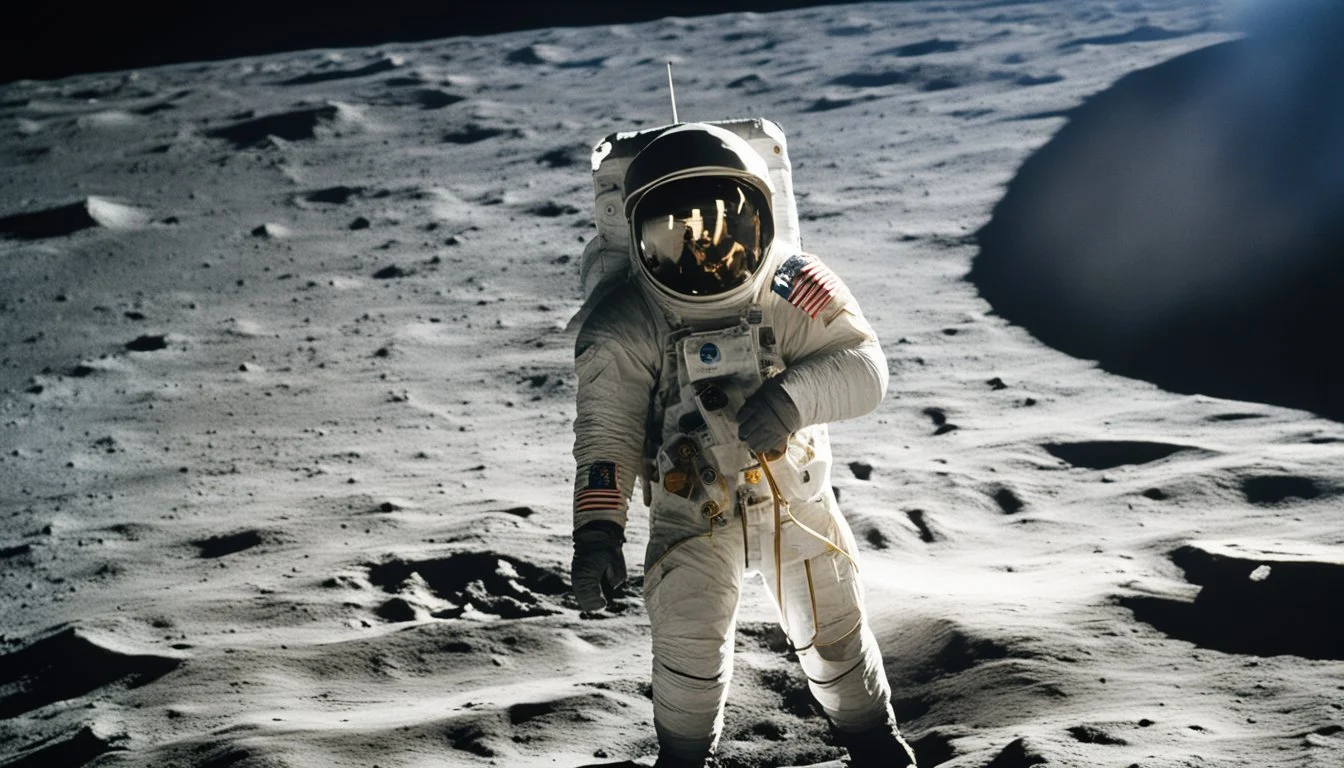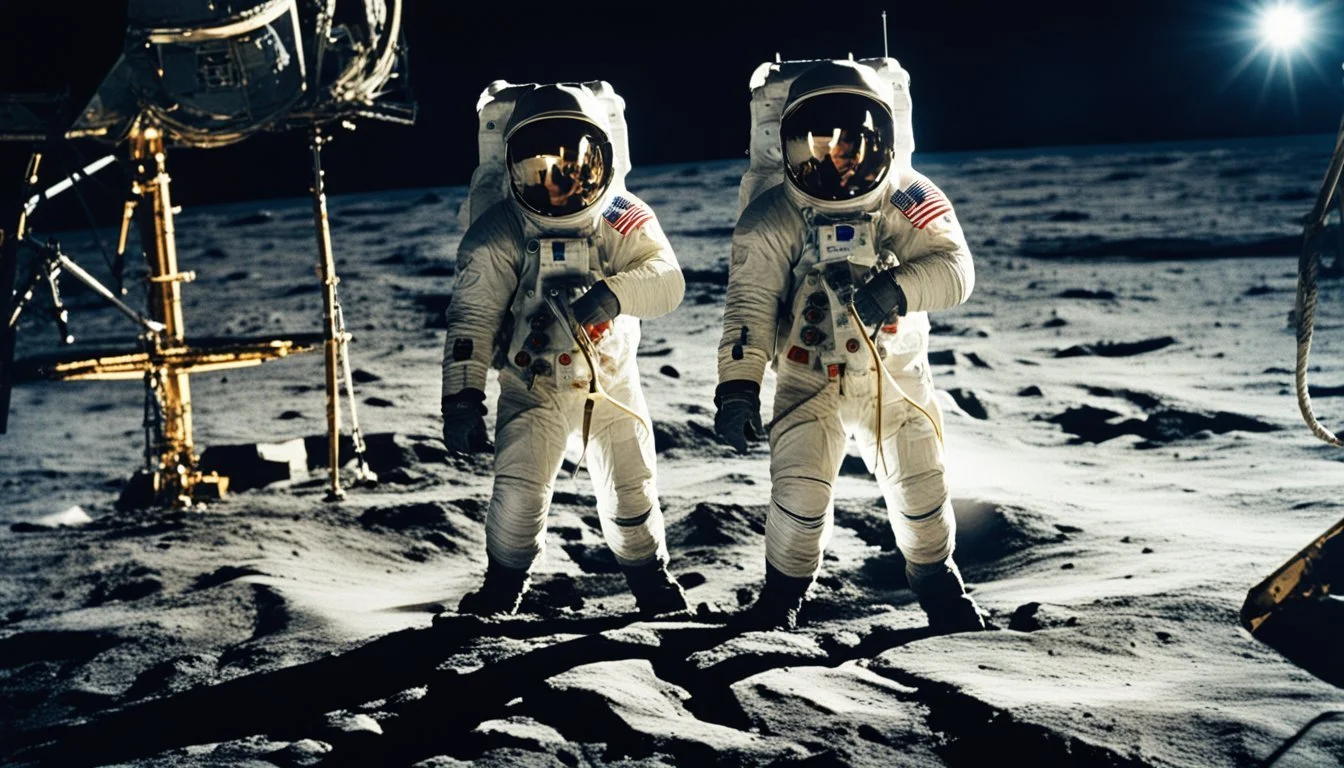Apollo 11 (2019) Review
Insightful Retrospective on a Historic Mission
Apollo 11, the monumental space mission that first landed humans on the moon, has captivated audiences and researchers for decades. The documentary, "Apollo 11" takes viewers on a captivating journey of archival footage and expert insights that highlight the painstaking efforts of those involved in making this unprecedented dream a reality.
Composed of original footage taken from 1969, the documentary paints an authentic and vivid picture of the events that transpired during the groundbreaking journey of the three astronauts - Neil Armstrong, Buzz Aldrin, and Michael Collins. Through seamless editing and meticulous storytelling, the film showcases the challenges and successes experienced by these brave men, as well as the NASA team who supported them from mission control.
Historical Context of Apollo 11
Apollo 11 holds a unique position in history as the spaceflight that first brought humans to the surface of the Moon. On July 20, 1969, Neil Armstrong and Buzz Aldrin stepped out of their lunar module and onto the Moon's surface while their fellow astronaut, Michael Collins, orbited above in the command module.
This mission marked a pivotal moment in the "Space Race" between the United States and the Soviet Union during the Cold War. The main objective of the mission was the fulfillment of President John F. Kennedy's challenge issued in May 1961, which called for America to send humans to the Moon and bring them safely back to Earth before the end of the decade.
Apollo 11 was launched on July 16, 1969, from Kennedy Space Center in Florida. The trajectory and navigation was carefully planned and executed by trained specialists at NASA, the National Aeronautics and Space Administration. This space agency was founded in 1958 in response to the Soviet Union's successes in space and is still at the forefront of research and development in space exploration.
The mission's success was a culmination of years of efforts by thousands of engineers, scientists, and support staff. It marked the zenith of human exploration and a significant milestone in the history of space travel, inspiring generations to come.
Overview of the Documentary
The Apollo 11 documentary, directed by Todd Douglas Miller, is a compelling and immersive cinematic experience. It chronicles the historic 1969 Apollo 11 mission, which marked the first time humans set foot on the lunar surface.
Director's Vision
Todd Douglas Miller's vision for the documentary was to allow the audience to watch and feel as if they were a part of the mission crew. Instead of relying on traditional narration or talking heads, Miller utilised footage and transcripts of mission audio to create an authentically immersive experience. The film was distributed by Neon and CNN Films, proving their commitment to breakthroughs in visual storytelling.
Production Quality
70mm Footage
The Apollo 11 documentary used high-quality, remastered 70mm footage, giving viewers an immersive experience. This format is rarely seen in modern documentaries and serves to provide exceptional detail and clarity. The visuals are stunning, offering a fresh perspective on the historic event.
Sound and Score
The sound design in the Apollo 11 documentary is another strong component. Meticulously crafted, the documentary features authentic NASA audio recordings, giving the audience an authentic feel. Additionally, the score by Matt Morton complements the awe-inspiring visuals. The music is designed to an extent that it beautifully underlines the emotions accompanying the documentary without overshadowing the story being told.
Editing and Pace
Eric Milano's editing in the Apollo 11 documentary is top-notch, moving the story along seamlessly and maintaining a consistent pace for the viewers. The documentary skillfully condenses the nine-day mission into a more manageable format without losing any of the crucial moments. This balance between maintaining the narrative's flow and including essential details adds significantly to the documentary's quality.
Restoration of Archival Footage and Uncatalogued Audio Recordings
The Apollo 11 documentary excels in its restoration of archive footage. Painstaking efforts were taken to ensure the footage was polished, giving viewers a high-quality visual experience. The artfully repurposed archival footage was digitised in an impressive 4K resolution, providing an enhanced window into the past.
The restoration process involved:
Cleaning the physical film reels
Converting the reels into digital formats
Enhancing the details, colors, and quality of the footage
Seamlessly integrating the footage with modern video standards
These restoration efforts allow the audience to immerse themselves in the historical events and feel as if they were part of the mission themselves.
Integrating Audio with Visuals
Another significant technical achievement of the Apollo 11 documentary lies in the expert integration of audio with visuals. The production team utilized audio recordings from the mission control as well as the astronauts themselves to provide a comprehensive auditory perspective of the event.
Key audio elements include:
Mission control communications
Astronaut conversations
Original broadcast transmissions
By synchronizing the archival footage with the audio recordings, the documentary creates an engaging and cohesive narrative. This enables viewers to experience the full spectrum of emotions, from the anticipation and excitement in the lead-up to the launch, to the tension and relief as the mission progresses.
Space Exploration Depiction
Verisimilitude of the Moon Landing
The Apollo 11 documentary is remarkable in its accurate representation of the historic moon landing mission. The footage used in the documentary largely comprises actual archival recordings from NASA, providing an authentic look at the lunar module Eagle's launch and touchdown on the moon's surface. Viewers are treated to stunning visuals of the moon's landscape along with the astronauts' exploration, which skillfully captures the excitement and wonder experienced during the mission.
Role of Machinery and Diagrams
The documentary goes beyond the awe-inspiring visuals by delving into the technical aspects of the Apollo 11 mission. The filmmakers dedicate a significant portion of the film to the roles and functionalities of the various machines and equipment that were instrumental in the success of the mission. In doing so, they seek to enlighten the audience on the lesser-discussed yet equally crucial aspects of this monumental achievement.
For example, the rocket that launched Apollo 11, Saturn V, is given due attention for its remarkable engineering and powerful performance. Furthermore, the documentary includes clear, easy-to-understand diagrams to help the audience comprehend the intricate workings of specific machinery, such as the Propulsion System and Guidance and Control System:
The carefully selected inclusion of such details contributes to creating an engaging and comprehensive, movie viewing experience that is both enjoyable and informative, truly doing justice to the multifaceted narrative of the Apollo 11 mission.
Personal Accounts and Interviews
Astronauts and Control Room
The Apollo 11 documentary presents numerous personal accounts and exclusive interviews from key personnel involved in the historic mission. Astronauts Neil Armstrong, Buzz Aldrin, and Michael Collins play a prominent part in the documentary, sharing their unique experiences and perspectives on the mission. These firsthand accounts add depth and authenticity to the storytelling process.
Mission Control also features heavily in the documentary with interviews from those who played crucial roles in directing the mission. Individuals such as Gene Kranz, the flight director, and others provide insight into the challenges faced and the decisions made from their vantage point in the control room.
Engineers and Scientists
In addition to the astronauts and Mission Control, the Apollo 11 documentary dedicates a section to interviews with engineers and scientists who contributed to the success of the mission. Their stories bring to light the dedication and hard work behind developing the cutting-edge technology that made the lunar landing possible.
These interviews offer an in-depth look at their experiences and the challenges they overcame, enabling a greater appreciation of the efforts that drove the mission to success.
Cinematic Experience
Theatrical Release and Formats
The documentary saw a wide theatrical release in various formats. For those seeking an immersive experience, the documentary was available in IMAX theatres. The impressive visuals and close up shots of the mission's events were remarkably enhanced with the high-quality resolution provided by IMAX.
Audience Reception and Impact
Apollo 11 documentary was met with awe and astonishment by the viewers. Audiences were captivated by the never-before-seen footage, which provided a comprehensive look at the milestone event. The documentary not only educated viewers on space travel but also ignited emotions of unity and appreciation for the human endeavor.
Cultural and Historical Impact
Influence on Space Narratives
The Apollo 11 documentary made a significant impact on the way space narratives are presented in popular culture. By using primary source material, such as the footage shot from the control room and news broadcasts of the time, the documentary provides a raw and unfiltered glimpse into the drama and emotions surrounding the mission. This approach has influenced other space-related documentaries and movies, as it demonstrates the power of historical context and primary sources in storytelling.
Furthermore, the documentary highlights the heroes of the Apollo 11 mission, not just the astronauts themselves but also the engineers and operators in the control room. This perspective allows the documentary to humanize the story and remind audiences of the teamwork and dedication that were critical to the success of the mission. As a result, subsequent space narratives often emphasize the interconnectedness and collaborative nature of these endeavors.
Conclusion
The Apollo 11 documentary successfully delves into one of the most significant events in human history. By incorporating never-before-seen archival footage, the film offers a fresh perspective on the mission that captivated the world.


